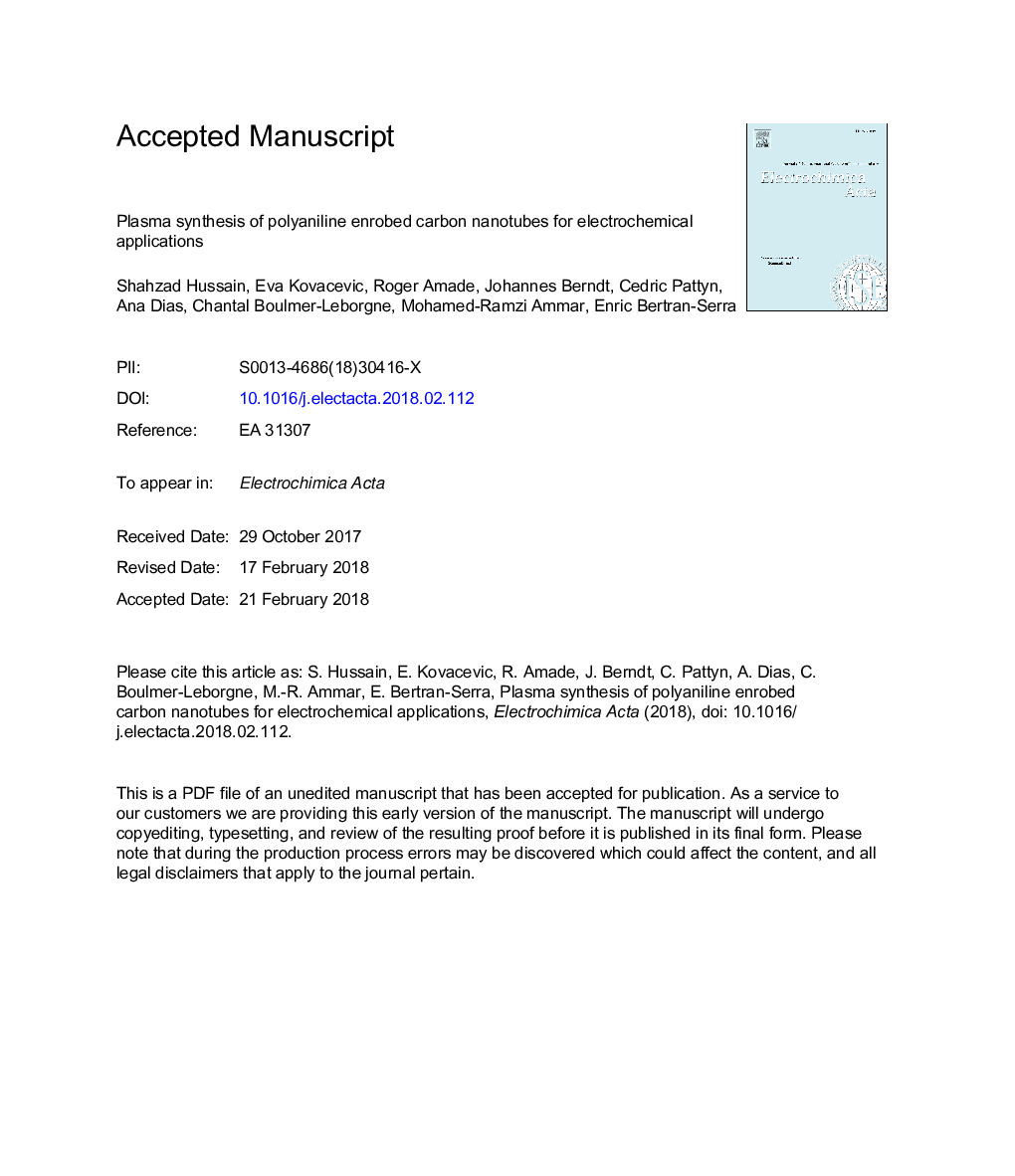| Article ID | Journal | Published Year | Pages | File Type |
|---|---|---|---|---|
| 6603781 | Electrochimica Acta | 2018 | 37 Pages |
Abstract
Radio frequency plasma-enhanced chemical vapor deposition (RF-PECVD) was employed to synthesize vertically aligned carbon nanotubes (VACNTs) using Ni catalyst on TiN/SiO2/Si substrate. Subsequently, CNTs were covered by a thin film of polyaniline (PANI) applying RF-plasma polymerization method. The structure and chemical nature of the samples were identified by microscopic and spectroscopic techniques. Scanning electron microscopy (SEM) evidences the presence of a PANI thin film wrapping the surface of CNTs. X-ray photoelectron spectroscopy (XPS) reveals that PANI presents a polyemeraldine based structure. Raman spectroscopy results show the appearance of fluorescence caused by a thin film of PANI over the carbon nanotubes. VACNTs and PANI enrobed VACNTs were electrochemically tested for supercapacitor applications in 0.2â¯M Na2SO4 electrolyte solution. VACNTs and PANI/CNTs electrodes deliver specific capacitances of 12â¯F/g and 1225â¯F/g respectively, at a scan rate of 5â¯mV/s. Cycling stability results show that at 15 A/g current density, PANI/CNTs composite retains 65% of the initial specific capacitance (410â¯F/g) after 5800 cycles.
Related Topics
Physical Sciences and Engineering
Chemical Engineering
Chemical Engineering (General)
Authors
Shahzad Hussain, Eva Kovacevic, Roger Amade, Johannes Berndt, Cedric Pattyn, Ana Dias, Chantal Boulmer-Leborgne, Mohamed-Ramzi Ammar, Enric Bertran-Serra,
